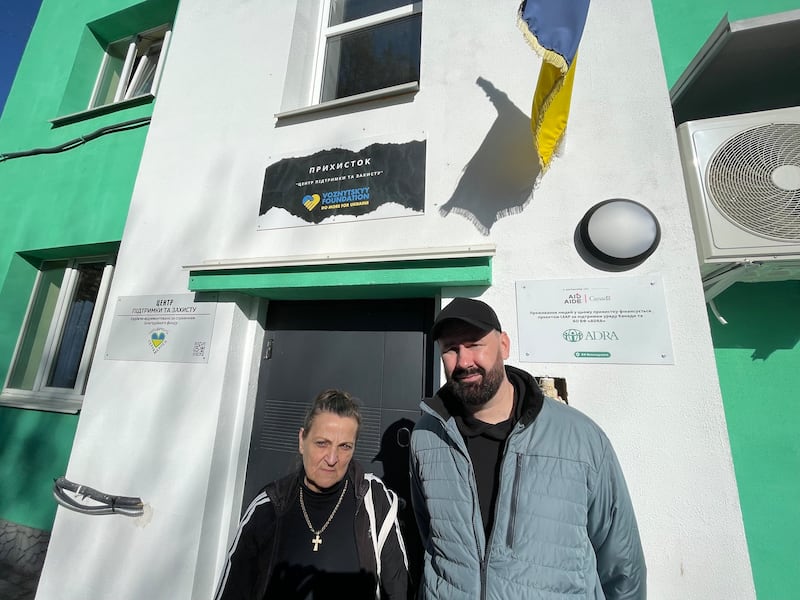Andriy Khozhev fled his hometown of Makiivka in eastern Ukraine a decade ago, and had to buy his father’s freedom from Russian-led militants who threatened to kill him for displaying a Ukrainian flag in his car.
When Moscow escalated its de facto occupation of parts of the Donetsk and Luhansk regions into a full-scale invasion in 2022, Khozhev began helping other displaced people in the western city of Lviv, and says arrivals at the centre that he now runs are steadily growing as Russia pushes back Ukraine’s outnumbered troops in the east.
The grinding advance of Russian forces in Donetsk region, along with their fresh assault on neighbouring Kharkiv province and daily missile and drone attacks, are not only driving more people from their homes but dimming the prospect of return for people who fled eastern and southern Ukraine earlier in the war.
“New arrivals have steadily been increasing. If last June about 150-160 a month came here on average, now it’s up to 220-250,” Khozhev says at Lviv’s Centre for Support and Protection, which has sleeping space for more than 50 internally displaced people and has helped more than 2,500 IDPs since opening last summer.
Nataliya Gubyak fled the southern city of Mykolaiv with her son and daughter in 2022, and it has come under heavy missile and drone attack again this month as Russia resumed intense air strikes on Ukraine’s Black Sea ports.
“We definitely won’t be going back soon. Now I have to think of the children, and make sure they can go to school and study. We left almost everything there, but now we must prioritise our safety and making a future,” Gubyak says.

“My mother is still there, she’s a doctor and must stay to work at the hospital. So we understand the situation – it seems to be getting bad again now in Mykolaiv.”
Raisa Ilchyk, guardian to four children whose parents were killed in shelling near Donetsk airport in 2014, evacuated them and fled Slovyansk in Donetsk region in 2022. Now Russian troops are only about 50km from the strategic city.
“I still go back frequently to Slovyansk. If we had as many weapons as we should have been given then there’d be enough for me to take up arms too. As it is, I just have a sharpened axe waiting for the Russians if they reach Slovyansk,” she says.
“I’m not scared. But your heart aches for the guys on the front,” she adds. “And we are losing some of our best people.”
Nataliya Biadovska’s soldier son Timur (19) was killed in a Russian missile attack on a base in Mykolaiv in 2022. She evacuated to Lviv with her husband, who died after illness last year. Now she gives advice and support to newly displaced people who arrive at the shelter.
“The people here at the shelter gave me lots of support. Now I’m on my own, and I feel I can be more useful here, sharing what I know with people who come here, than I can be living under shelling in Mykolaiv,” she says.
“The West should give us more weapons, because if we can’t stop [the Russians] then you will have to stop them on your own soil.”
This year, Russia has taken the small but strategic cities of Avdiivka and Vuhledar in Donetsk region and is now fighting for control of Toretsk and Chasiv Yar. It has also taken some border villages in Kharkiv region, launched an attack on the town of Vovchansk and forced Ukraine to start evacuating civilians from the small city of Kupiansk in Kharkiv region and from frontier areas of neighbouring Sumy province.

Winter may slow Russia’s creeping advance, but it is also likely to bring long and frequent blackouts on a Ukrainian power grid that has been pummelled by air strikes.
“The security situation in Ukraine continues to be extremely precarious with increasing pressure from the Russian Federation along several frontline points. This is coupled with the continued complex air strikes against urban centres and attacks destroying energy and other critical infrastructure,” says Elisabeth Arnsdorf Haslund, a spokeswoman for the UN refugee agency (UNHCR) in Ukraine.
“In Donetsk region, the intensified shelling and hostilities have resulted in numerous civilian casualties, damaged homes and disrupted essential services, and this has led to significant displacement and mandatory evacuations from frontline communities with more than 120,000 people leaving their homes in the region since beginning of August,” she adds.
“But we must also not forget the people who are finding themselves in protracted displacement after two and half years of Russia’s full-scale invasion, and some of the most vulnerable displaced people are still accommodated in collective sites across the country.”
The next strategic city in Russia’s crosshairs is Pokrovsk, a staging post for the Ukrainian army in Donetsk region that was home to about 60,000 people until 2022. Now shelling has destroyed much of its infrastructure, Russian troops are approaching, and officials are urging the 12,000 or so civilians still in the city to leave urgently.
“How do we stop them?” Khozhev says of Russia’s invasion force. “We all know how to stop them – with more weapons.”
- Sign up for push alerts and have the best news, analysis and comment delivered directly to your phone
- Find The Irish Times on WhatsApp and stay up to date
- Our In The News podcast is now published daily – Find the latest episode here




















